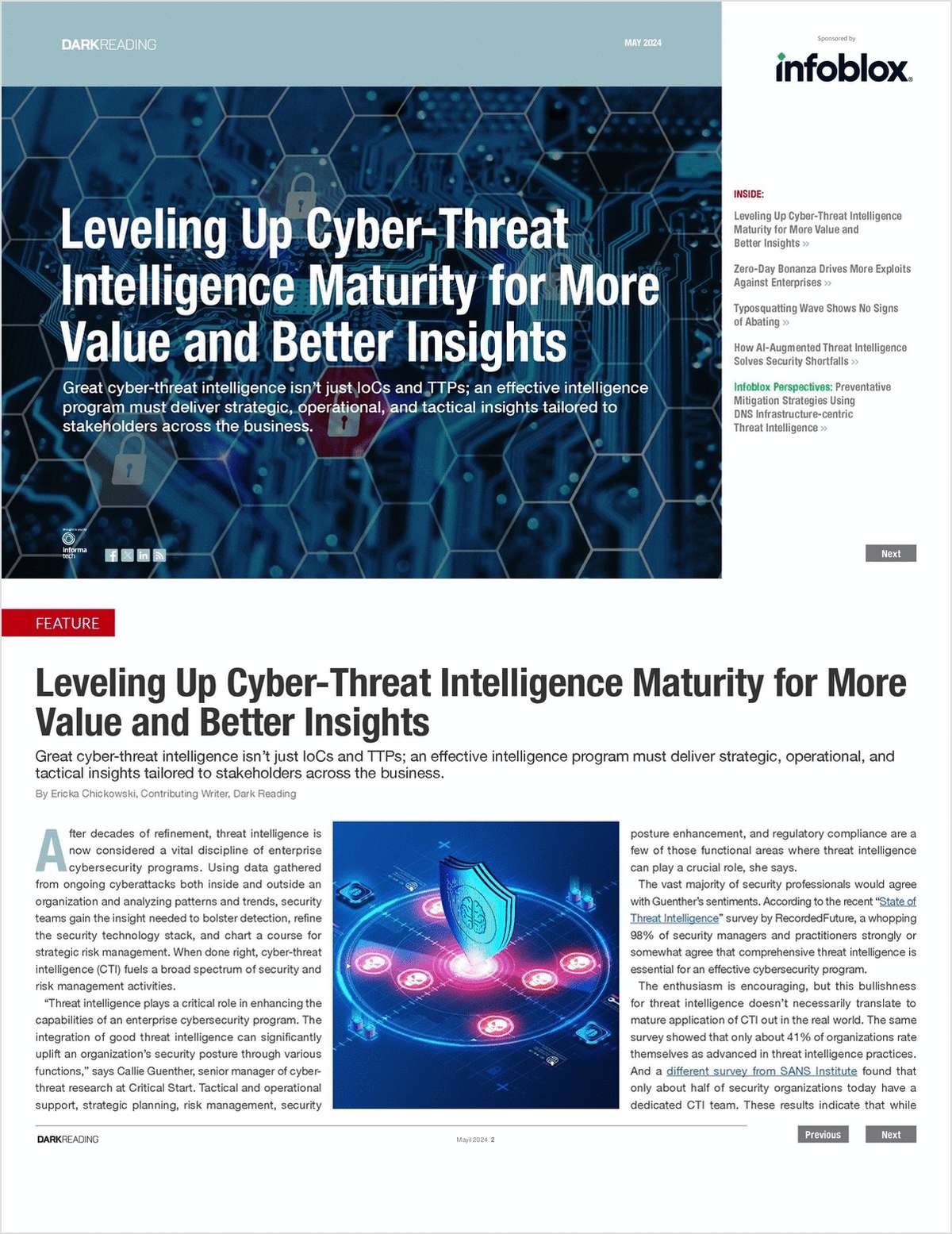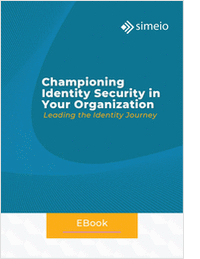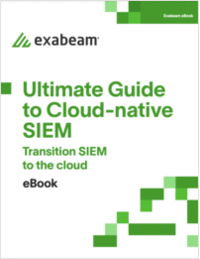Request Your Free Report Now:
"Leveling Up Cyber-Threat Intelligence Maturity for More Value and Better Insights"
Great cyber-threat intelligence isn't just indicators of compromise (IoCs) and tactics, techniques, and procedures (TTPs); an effective intelligence program delivers strategic, operational, and tactical insights tailored to stakeholders across the business. By analyzing patterns and trends in data from both inside and outside an organization, security teams gain the insight needed to bolster detection, refine the security technology stack, and chart a course for strategic risk management.
After decades of refinement, threat intelligence is considered a vital discipline of enterprise cybersecurity programs. By analyzing patterns and trends in data gathered from both inside and outside an organization, security teams gain the insight needed to bolster detection, refine the security technology stack, and chart a course for strategic risk management. When done right, cyber-threat intelligence (CTI) fuels a broad spectrum of security and risk management activities.
The enthusiasm for threat intelligence doesn’t necessarily translate to mature application of CTI out in the real world. A survey from SANS Institute found that only about half of security organizations today have a dedicated CTI team. These results indicate that while threat intelligence as a practice is fully mainstream and likely plays some part in most security programs, it’s not consistently or formally applied across the board.
According to threat intelligence experts across the cybersecurity community, 2024 is a good time to start moving those maturity levels up a notch. Whether that means starting up an official CTI team from scratch or expanding the use cases and discipline across an existing program, the conditions are ripe for making improvements in threat intelligence.
To do that, organizations will need to have a strong grasp of how they can squeeze the most security value out of threat intelligence — particularly as they try to move TTPs. They’ll want to get more disciplined and intentional as they plot their activities across the CTI life cycle. This means thoroughly understanding requirements from all stakeholders who use threat intelligence, picking appropriate sources of data, and creating repeatable (and, where ossible, automatable) processes for data collection, processing, and analysis.
Whether it is tactical, operational, or strategic, good threat intelligence helps organizations make smarter security decisions, which in turn fosters better defensibility and decreases response costs. The caveat here is that the intelligence has to be of decent quality. Bad intelligence can drive up the cost of security and response further than it needs to be with poor decision-making,
The acronym CART can act as a simple yardstick to judge the value and usability of intelligence. CART stands for completeness, accuracy, relevance, and timeliness the four main traits of quality intelligence.
The most common understanding of threat intelligence use cases today tends to revolve around very tactical or operational application of technical data. While intelligence plays a huge role in helping security operations center (SOC) analysts detect breaches and incident responders to accelerate their actions, that’s only a fraction of the value it can offer to a security program.
Download the report to learn:
- What makes good threat intelligence?
- How to deliver relevant threat intelligence?
- How to pick sources and setting up collection plans.
- Review news on how zero day vulnerabilities drive more exploits.
- Why typosquatting attacks continues to be a problem.
- How AI-augmented threat intelligence addresses security gaps
- Using DNS infrastructure for threat intelligence.
Offered Free by: Infoblox
See All Resources from: Infoblox






